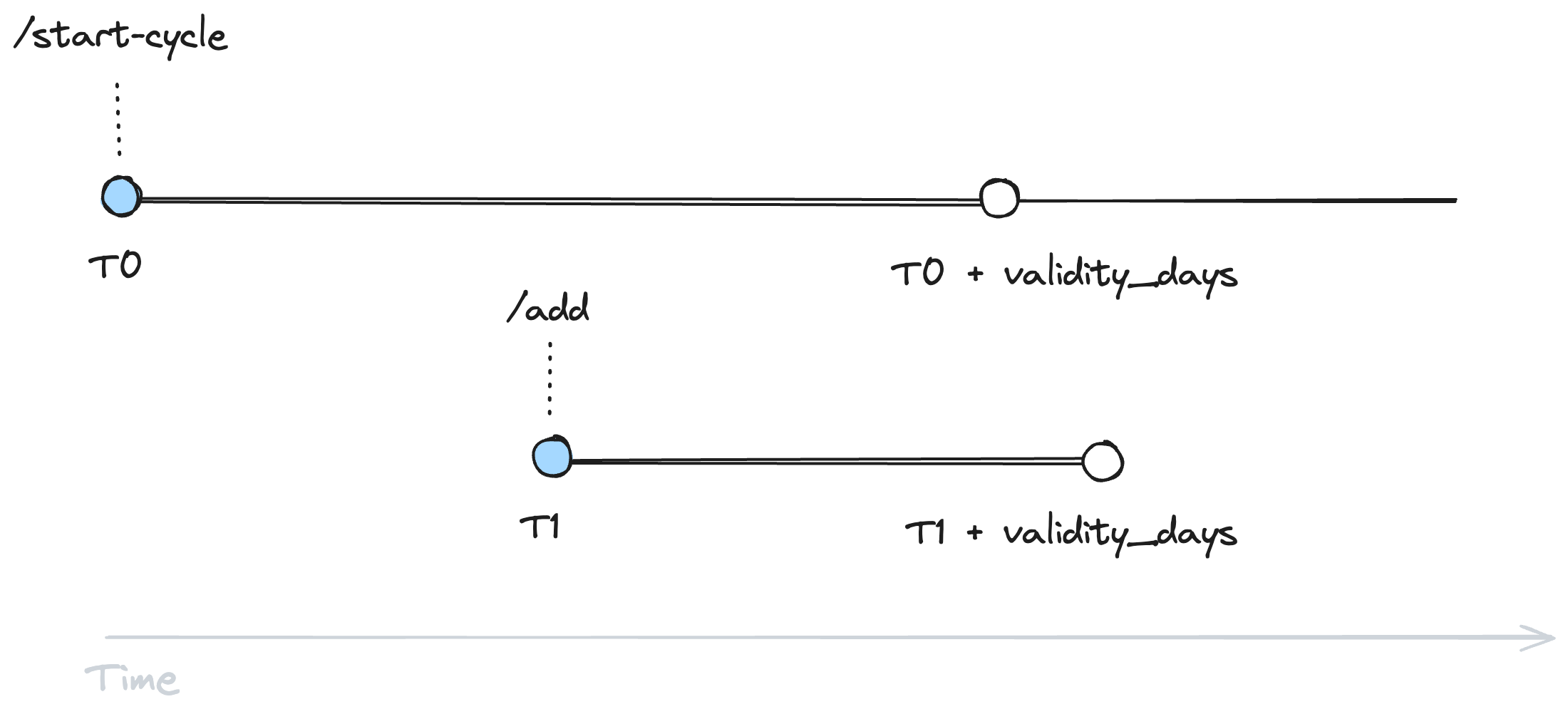Appearance
Cycle
What is a Cycle
A Cycle is a period of time during which a user's credits are valid and can be used. There are two types of cycles:
Recurring CycleOne-time Cycle
Cycle Types
Recurring Cycle
The Recurring Cycle starts at the time of the credit addition and renews automatically for the specified validity period (determined by the validity_days parameter). Users can have only one recurring cycle at a time. The recurring cycle is typically used for subscription-based services, where the credits are renewed periodically, like Monthly or Yearly. The remaining balance at the end of the cycle will not be carried over to the next cycle.
One-time Cycle
The One-time Cycle also starts at the time of credit addition but does not renew once it expires. Upon reaching the cycle end date, the credits expire and are no longer available for use. This type is typically used for promotional offers or loyalty programs, where the credits are valid for a limited time, like 15 days. Users can have multiple one-time cycles.
Multiple Cycles
A user can have multiple Cycles active at the same time. As said before, users can have multiple One-time Cycles but only one Recurring Cycle. Each Cycle is independent of the others and has its own validity period. For example, a user can have a Monthly cycle related to their subscription and a cycle of 15 days related to credits added for a promotional offer as shown below:

While Cycles are essential for managing the validity period of credits, it's crucial to understand how Creduse handles credit subtraction across multiple active Cycles. The system follows a specific logic to prioritize and utilize credits from different Cycles, ensuring that the oldest credits are used first and the user's balance remains accurate. For a detailed explanation of the credit subtraction process, refer to the Credit Subtraction Logic section.
Duration and expiration
The duration of a cycle is determined by the validity_days parameter. This parameter specifies the number of days for which the credits are valid. For example, if you set validity_days to 30, the credits will be valid for 30 days from the time of addition.